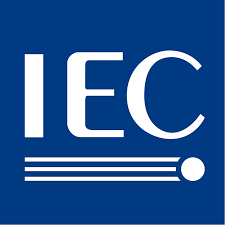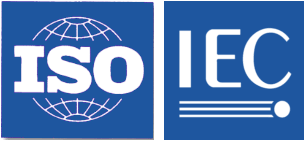Standard data element types with associated classification scheme for electric components - Part 4: IEC reference collection of standard data element types and component classes
Database Standard

Database Standard

Database Standard

Database Standard

Database Standard

IEC 61406-1:2022 specifies minimum requirements for a globally unique identification of physical objects which also constitutes a link to its related digital information. This identification is designated hereinafter as "Identification Link" (IL), with the encoded data designated as IL string. The IL string has the data-format of a link (URL). The IL is machine-readable and is attached to the physical object in a 2D symbol or NFC tag. The requirements in this standard apply to physical objects: - that are provided by the manufacturer as an individual unit, - and that have already been given a unique identity by the manufacturer. This document does not specify any requirements on the content and the layout of nameplates/typeplates (e.g. spatial arrangement, content of the plain texts, approval symbols etc.).

The purpose of ISO/IEC TR 20943-5:2013 is to describe a procedure for establishing metadata crosswalks based on the ISO/IEC 11179 series, subsequently improving mapping quality between metadata.
Therefore, ISO/IEC TR 20943-5:2013 describes a metadata mapping procedure (MMP), which can maximize the interoperability among ISO/IEC 11179-based registries through achieving metadata registry content consistency.

ISO/IEC TR 20943-6:2013 covers the framework for generating ontologies based on ISO/IEC 11179-3, and provides the procedure and mapping model for generating ontologies.
ISO/IEC TR 20943-6:2013 describes a method to generate ontologies for a context using concepts in ISO/IEC 11179-3. Most ontologies are basically composed of classes (concepts), properties, relations between classes, and instances (objects or individuals). ISO/IEC TR 20943-6:2013 considers the generation of ontology consisting of a subset of ontology components required for defining ontologies at the conceptual level which is called "FGO_Ontology". ISO/IEC TR 20943-6:2013 uses the prefix "FGO_" to avoid confusion from homonym and to clearly identify each term. For example, "Property" is specified in ISO/IEC 11179-3 as well as in ISO/IEC TR 20943-6:2013, but the meaning is slightly different. ISO/IEC TR 20943-6:2013 defines FGO_Class, FGO_Property, and FGO_Relation to distinguish between components of FGO_Ontology and components of ISO/IEC 11179-3.
ISO/IEC TR 20943-6:2013 specifies the method to generate ontologies using registered concepts in ISO/IEC 11179-3 Concepts metamodel region and Data description metamodel region. ISO/IEC TR 20943-6:2013 specifies a procedure and method for generating ontologies due to an application domain reusing concepts registered in a metadata registry.
ISO/IEC TR 20943-6:2013 does not include a way to describe in a specific ontology description language, such as Resource Description Framework (RDF), RDF Schema (RDFS), Web Ontology Language (OWL), Topic Map, and Knowledge Interchange Format (KIF).

The scope of this standard (Part 2) addresses the specific requirements which are applicable to all types of electronic devices with an integral display such as cell phones, computer tablets, desktop and laptop computers, monitors and printers.

This document defines the requirements for the symbology known as extended rectangular data matrix (DMRE). It specifies the DMRE code symbology characteristics, data character encodation, symbol formats, dimensions and print quality requirements, error correction rules, decoding algorithm, and user-selectable application parameters.
It applies to all DMRE code symbols produced by any printing or marking technology.
Original data matrix code sizes are not covered by this document but defined in ISO/IEC 16022 using the same matrix placement, decoding and error correction algorithm.

This document is an ISO/IEC 9594-8 (public key infrastructure (PKI) digital signatures and certificates) application specification for automated identification services. It specifies a method whereby data stored within a barcode and/or RFID tag are structured, encoded and digitally signed. ISO/IEC 9594-8 is used to provide a standard method for key and data description management and distribution. It is worth noting that the data capacity and/or data transfer capacity of automated identification data carriers are restricted. This restricts the normal use of a digital signature as specified in ISO/IEC 9594-8 within automated identification services.
The purpose of this document is to provide an open and interoperable method, between automated identification services and data carriers, to read data, verify data originality and data integrity in an offline use case. .....

This International Standard specifies a method to assess the symbol quality rendered on electronic displays (i.e. the symbol produces its own light) when the reading device is a two-dimensional bar code imager.
In addition, this international standard specifies a method to assess the quality of symbols that are intended to be read with general-purpose cameras in ambient lighting conditions.
Further, this international standard describes modifications, which are to be considered in conjunction with the symbol quality methodology when applied to a particular symbology specification as defined in ISO/IEC 15415 and ISO/IEC 15416. It defines alternative illumination conditions, display pixel conditions and the reporting of the grading results. This document also describes appropriate ranges of symbol X-dimensions.

This International Standard defines the requirements for the symbology known as Data Matrix. It specifies the Data Matrix symbology characteristics, data character encodation, symbol formats, dimensions and print quality requirements, error correction rules, decoding algorithm, and user-selectable application parameters.
It applies to all Data Matrix symbols produced by any printing or marking technology.
